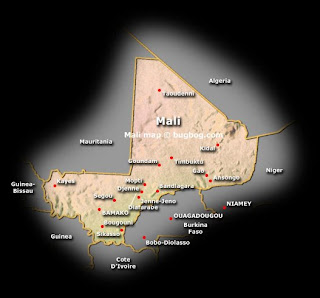By 6th. century AD, the lucrative trans-saharan trade in gold, salt and slaves had begun, facilitating the rise of Mali's three great empires.
1. The Ghana Empire, dominated by the Soninke people and centered in the area along the Malian-Mauritanian frontier, was a powerful trading state from about AD 700 to 1075.
2. Malinke empire, of MALI HAD ITS ORIGINSON THE UPPER NIGER R.IVER IN THE 11TH. CENTURY , expanding rapidly in the 13th. century under the leadership of Souniata Keita, it reached its height about 1325, when it conquered Timbuktu and Gao. there after tge kingdom began to decline, and by the 15th. century , it controlled only a small fraction of its former domain.
3. The Singhai Empire expanded its power from its center in Gao during the period 1465-1530. At its peak under Askia Mohammad I,it encompassed the Hausa staes as far as Kano (present day Nigeria) and much of the territory that had belonged to the Mali Empire in the west It was destroyed by a Moroccan invasion in 1591. Timbukytu was a center of commerce and of the Islamic faiththroughout this period, and priceless manuscripts from this epoch are still preserved in Timbuktu. US and other state are trying to preserve these priceless manuscripts as part of mali's cultural heritage.
Mali
